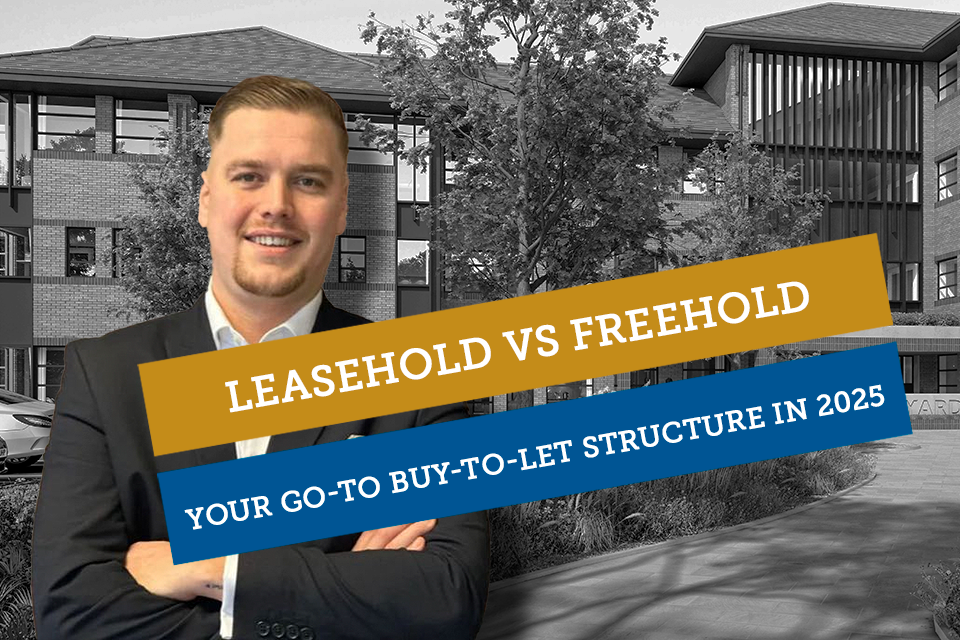Share
Exploring the 3,560 Mortgage Deals Available to UK Property Investors
If you’re a UK property investor looking to expand your portfolio, you’re in luck. Right now, there’s an impressive 3,560 buy-to-let (BTL) mortgage deals on the market, offering plenty of choice for those wanting to borrow to buy. Whether you’re a seasoned landlord or just starting out, the current mortgage landscape presents a fantastic opportunity to secure competitive finance and make the most of your investment.
In this blog post, we’ll break down what’s on offer, highlight key factors to consider, and help you navigate the world of buy-to-let mortgages with confidence.
A Healthy Market for Landlords
Over the past few years, the buy-to-let sector has faced its fair share of challenges—tax changes, regulatory shifts, and rising interest rates have all made things a little trickier. But despite these hurdles, the demand for rental properties remains strong, and lenders are keen to provide funding solutions for investors.
With 3,560 different BTL mortgage products currently available, there’s more choice than ever. This means landlords can shop around for deals that suit their financial goals, whether that’s securing a low interest rate, fixing repayments for peace of mind, or opting for flexible terms to facilitate portfolio growth.
What’s on Offer?
Lenders have tailored their offerings to cater to a range of investment strategies and borrower types. Here are some of the key types of buy-to-let mortgages currently available:
1. Fixed-Rate Buy-to-Let Mortgages
If you prefer certainty over your monthly repayments, a fixed-rate deal is ideal. Many lenders are offering competitive fixed rates, allowing landlords to lock in an interest rate for two, five, or even ten years. This protects you from any potential base rate hikes in the future.
2. Tracker Buy-to-Let Mortgages
These deals move in line with the Bank of England’s base rate. If interest rates drop, so do your repayments. However, if rates rise, so will your costs. While tracker mortgages can be riskier, they can also offer attractive low rates when market conditions are favourable.
3. Interest-Only vs. Repayment Mortgages
Most landlords opt for interest-only mortgages to maximise cash flow. With this structure, you only pay the interest each month, keeping your outgoings lower. However, you’ll need a strategy for repaying the loan at the end of the term—usually through property appreciation, sale, or refinancing.
For those who prefer to gradually pay off the loan, repayment mortgages are also available, though the monthly costs will be higher.
4. Ltd Company Buy-to-Let Mortgages
More landlords are purchasing properties through limited companies due to tax advantages. Lenders have responded by increasing their range of limited company BTL products, making it easier for investors to secure finance through a corporate structure.
5. Specialist Mortgages for HMO and Multi-Unit Properties
If you’re investing in a house in multiple occupation (HMO) or a multi-unit block, you’ll need a specialist mortgage. The good news is that lenders are expanding their offerings in this space, with more competitive rates and higher loan-to-value (LTV) options.
How to Choose the Right Buy-to-Let Mortgage
With so many deals available, how do you pick the best one? Here are some key factors to consider:
1. Interest Rate & Fees
The headline interest rate is important, but don’t forget to factor in arrangement fees, early repayment charges, and other costs. Some mortgages with low rates may come with hefty upfront fees, so always calculate the total cost over the deal period.
2. Loan-to-Value (LTV) Ratio
Most BTL mortgages require a deposit of at least 25%, but some lenders offer 80% LTV or higher. The lower your LTV, the better the interest rates you’re likely to get.
3. Rental Yield Requirements
Lenders will assess whether your expected rental income covers the mortgage repayments by a certain margin—typically 125-145% of the mortgage payment. If you’re investing in a high-rent area, you may find it easier to secure funding.
4. Fixed vs. Variable Rates
If you want stability, a fixed-rate mortgage may be your best bet. However, if you’re comfortable with some risk and believe rates may drop, a tracker or variable-rate deal could work in your favour.
5. Your Investment Strategy
Are you looking for long-term capital growth, strong monthly cash flow, or a mix of both? Your mortgage choice should align with your investment goals. For example, interest-only mortgages work well for those looking to maximise cash flow, while repayment mortgages help build equity over time.
Current Market Trends
The UK property market remains resilient, and rental demand continues to outstrip supply in many areas. This has led to rising rents, which in turn support landlords’ ability to cover mortgage costs and generate profits.
At the same time, lenders are competing for business, meaning there are some attractive deals available. With inflation showing signs of stabilising, we could even see interest rates come down later in the year, making borrowing more affordable.
Final Thoughts
With 3,560 buy-to-let mortgage products to choose from, UK property investors have more options than ever. Whether you’re expanding your portfolio, refinancing an existing property, or taking your first steps into the rental market, there’s a mortgage deal out there to suit your needs.
Before diving in, take the time to compare options, consider your long-term investment strategy, and seek professional advice if needed. With the right mortgage in place, you can make the most of the opportunities in the buy-to-let sector and build a strong, profitable property portfolio for the future.
Are you in the market for a buy-to-let mortgage? What’s your biggest challenge when securing finance? Let us know in the comments below!
Stay ahead of the game with the latest property updates and exclusive investment opportunities
Sign up to our newsletter now!











